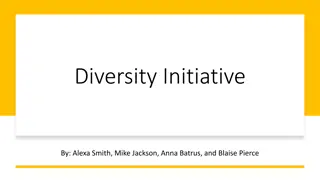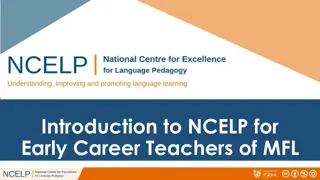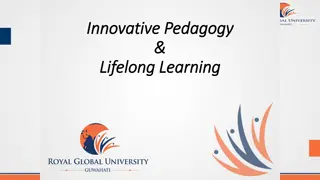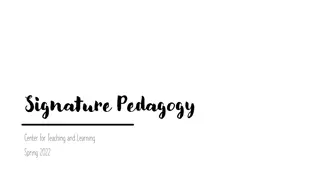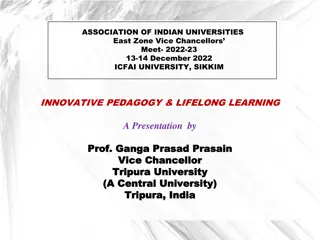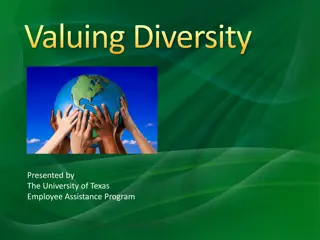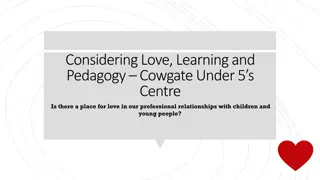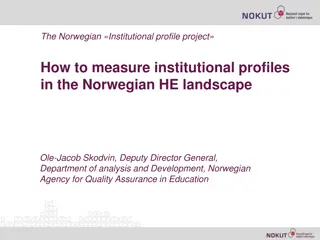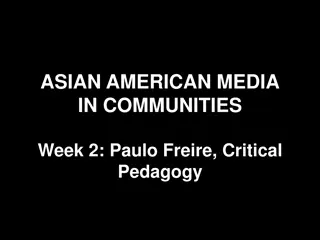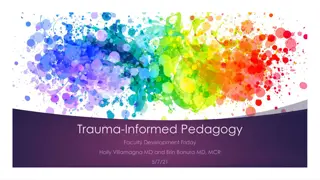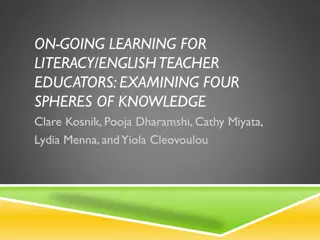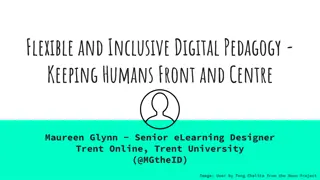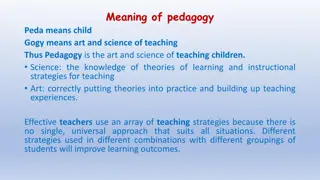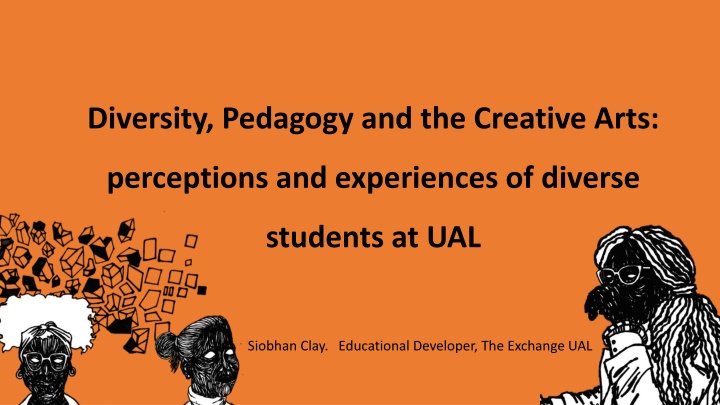
Perceptions of Diversity and Pedagogy in Higher Education
This research explores diverse students' experiences at UAL, focusing on teacher diversity, student-staff relationships, and the importance of inclusive curriculums. Key findings emphasize the lack of discourse on race and identity work, highlighting the need for more dialogues around these issues.
Download Presentation

Please find below an Image/Link to download the presentation.
The content on the website is provided AS IS for your information and personal use only. It may not be sold, licensed, or shared on other websites without obtaining consent from the author. If you encounter any issues during the download, it is possible that the publisher has removed the file from their server.
You are allowed to download the files provided on this website for personal or commercial use, subject to the condition that they are used lawfully. All files are the property of their respective owners.
The content on the website is provided AS IS for your information and personal use only. It may not be sold, licensed, or shared on other websites without obtaining consent from the author.
E N D
Presentation Transcript
Diversity, Pedagogy and the Creative Arts: perceptions and experiences of diverse students at UAL Siobhan Clay. Educational Developer, The Exchange UAL
Why this research and why now? Sector wide attainment gap for Black, Asian, Minority Ethnic (BAME) students in UK Higher Education Dearth of diverse teaching staff Does one have implications for the other? Wanted to understand teacher diversity from the student perspective
Theoretical frameworks Critical Race Theory (CRT) Whiteness Cultural Capital
Key findings Importance of good student-staff relationships Lack of discourse on race and identity work Developing inclusive curriculums Aspirations to teach
Importance of good student-staff relationships Well my first project was absolutely really important I think, because it was about immigration, the Irish diaspora, so the people that came over from Ireland to England You know [lecturer] kind of understands what I wanted to do, and like I said, I think he really thinks the project is interesting too, it s not airy-fairy. (p.63)
Because Im going, no, no, because I said this work isnt finished. Yes, it's finished, and it s, like, no, it isn t, because it s not saying what I want it to say. So, yes, that was just quite difficult, there wasn t anywhere I can go with it, there wasn t anyone I could really talk to, and I think even the black tutor was a bit appalled by it but didn t really sort of try and help me fix that, what it was doing which I didn t want it to do, so, yes, that was the very first thing I made and I just felt really awful, I just thought, [ ] who are these people that I m with, I ve got no one to talk about these issues with. (p.69)
Lack of discourse/misunderstandings on race and identity work Because of your position as a black person, quite often, I think, things can be projected into your work that aren t necessarily what you intended. Like it's sort of an anger about racism or something that might just not be what you were kind of going for, so [ ] it definitely would be helpful to be able to have more dialogues around these things. (p.64)
Developing inclusive curriculums I would say the teaching curriculum could be more diverse [...] I don t know much about my own culture and it would be nice to kind of throw in an Arab theorist or a black African theorist, or Caribbean [ ] Because what we re learning in the design and the skillset is something that s internationally going to be used, and it s going to be shipped all over the world. (p.71)
I did a part time foundation [] and black art was never mentioned, black artists were never mentioned, so not having been in the art field for years I just thought, oh, well, maybe black people just don t make art, don t do fine art. By the time I got to university I was, like, oh, right, okay, there are more people than Yinka Shonibare (p.72)
Aspirations to teach I have no idea how it happens, I think you just get asked (p.90)
its only going to happen once there are enough diverse people in the industry to come back [ ] so because there is more diversity now and there are lot more people that are interested in these type of fields, then I think it will be reflected in the staff members when those students come back. (p.76)
Discussion activity In small groups read the 2/3 quotes on your table and discuss: What is at play here? What can we learn from this (positive or negative)? What practical approaches would the group employ to address these points?
The future of learning lies with the cultivation of conversations, of dialogue. hooks, 2010:44
Many thanks for coming s.clay@arts.ac.uk All illustrations by Olivia Twist https://www.yesoliviatwist.com

